Last week we look at the existence and nature of God with evidence from not only the Bible, but from the fields of philosophy and cosmology. We will pick up this evidence trail with arguments for God’s existence from teleology (design) and the demonstration of a universal moral law. We will then conclude this session with a description of God’s Triune nature.
Overview of the evidence from Teleology, Morality and the Trinity
Design—The Teleological Argument
Premise #1: Whatever has the appearance of design must have a designer – for example, a building must have a builder, a painting or sculpture must have an artist, and a computer must have a programmer.
*Premise #2: The Universe has the appearance of design – mathematics, engineering, physics and biochemistry are all elements with evidence of design.
Premise #3: Therefore, the Universe has a designer.
*Remember we must provide evidence for premise #2
Teleological Evidence
There is an abundance of evidence in the following fields of study that point towards design, not only in the laws of nature, but in the design and structure of our bodies. We will look at just a few examples from the following:
- Design in Mathematics (example: Fibonacci sequence)
- Design in Engineering (example: Warren Truss)
- Design in Physics (example: Anthropic principle)
- Design in Biochemistry (examples: irreducible complexity in cellular structures and information codes in DNA)
Mathematics
The Fibonacci sequence is an example of mathematics that show intelligence in its design: The first two numbers in the Fibonacci sequence are 1 and 1, or 0 and 1, depending on the chosen starting point of the sequence, and each subsequent number is the sum of the previous two:
The next number is found by adding up the two numbers before it:
The 2 is found by adding the two numbers before it (1+1)
The 3 is found by adding the two numbers before it (1+2),
And the 5 is (2+3), and so on!
We find examples of the Fibonacci sequence everywhere because it gives purpose, function or optimal aesthetics.
- The Fibonacci sequence is found in Golden Spirals (sea shells, flower petal, galaxies, storm patterns, etc.)
- The Fibonacci sequence is found in the Golden Rectangle (building design, logos, art, architecture, etc.)
- The Fibonacci sequence is even found in the design of our bodies (human anatomy)
Engineering
Warren Truss – human designed bridges have a strange similarity to the design in the wings of birds – where did humans get their creative design abilities? God was way ahead of us.
Physics
The Fine Tuning of the Universe evidences specific and deliberate design features. For example…
The Anthropic Principle:
- All the seemingly arbitrary and unrelated constants in physics have one strange thing in common – these are precisely the values you need if you want a universe capable of producing life.
- There are over 100 constants that we find in nature. If any one of these constants was off by a percent of a billionth there could be no biologically based life on earth or anywhere in the universe.
- These constants must be maintained on a balance thinner than a razor’s edge.
Examples of Anthropic Constants
- Oxygen level:
21% of the atmosphere is oxygen, if it was at 25% – fires would erupt spontaneously, if it was at 15% – human beings would suffocate.
- Moon-Earth gravitational interaction:
If the gravitational pull were a few degrees greater then tidal effect on the oceans would be too severe, if less, orbital changes would cause climatic instabilities, in either event life would be impossible.
- Carbon dioxide level:
If sustained at a higher level a runaway greenhouse effect would develop and we would all burn up, if lower, plants would not be able to maintain efficient photosynthesis and we would all suffocate.
- Strong and weak nuclear force:
If at a greater or weaker force then elements could never form and the atom could not hold together.
- Gravitational force:
If altered by 0.37 of 1 percent our sun would not exist and neither would we.
- Centrifugal force:
If the force of planetary movements did not precisely balance the gravitational forces, nothing could be held in orbit around the sun.
- Expansion rate of the universe:
If at a rate one-millionth slower expansion would have stopped and the universe would have collapsed on itself before any stars had formed, if faster no galaxies would have ever formed.
- Atmospheric water vapor levels:
If greater a runaway greenhouse effect would cause temperatures to rise too high for human life, if less an insufficient greenhouse effect would make the earth too cold to support human life.
- Jupiter’s orbit related to its protection for Earth:
If Jupiter were not in its current orbit the Earth would be bombarded with space material Jupiter’s gravitational field acts as a cosmic vacuum cleaner, attracting asteroids and comets that might otherwise strike the Earth.
- The thickness of the Earth’s crust:
If thicker too much oxygen would be transferred to the crust therefore not enough left to support life, if thinner volcanic and tectonic activity would make life impossible.
- Earth’s rotational speed:
If the rotation of the Earth took longer than 24 hours temperature differences would be too great between night and day, if shorter than 24 hours atmospheric wind velocities would be too great to sustain life.
- Earth’s axial tilt:
The 23-degree tilt is just right, if altered slightly the surface temperatures would become too extreme to support life.
Biochemistry
Evidence from inside our bodies includes irreducible molecular machines like the ribosomes in the cell, the structure of the eye and the cochlea of the ear, the blood clotting system and the most amazing evidence of design comes from the information codes known as DNA.
What is DNA?
DNA is found in the cells of all living things
- A cell is the basic unit of life and a complicated molecular machine (about a tenth of the size of the head of a pin) – each cell is made up of about three billion units of DNA, and we have trillions of cells in our bodies
- DNA contains information encoded on strands that make up our genes and this information has coded instructions on how to build and maintain the systems of the body as well as instructions for our physical characteristics
- These instructions are known as the “Genetic Code” and written out, this Human Genome would stretch 5,592 miles, (9,000 km).
- It would take a typist working eight hours a day half a century to type
- It would fill one million pages; 5,000 books stacked 200 feet high
RIGHT – WRONG
The Moral Argument
Premise #1: A universal moral law must have a moral lawgiver (any law must have a lawgiver).
*Premise #2: There is a universal moral law evident in the universal behavior and expectations of all humans.
Premise #3: Therefore, there must be a universal moral lawgiver.
God has placed a moral code in the conscious of all mankind
“Even Gentiles, who do not have God’s written law, show that they know His law when they instinctively obey it, even without having heard it. They demonstrate that God’s law is written in their hearts, for their own conscience and thought either accuse them or tell them they are doing right.”
Romans 2:14-15
God’s Word teaches us
“All Scripture is inspired by God and is useful to teach us what is true and to make us realize what is wrong in our lives. It corrects us when we are wrong and teaches us to do what is right. God uses it to prepare and equip his people to do every good work.”
2 Timothy 3:16-17
We know the Moral Law exists because…
- It is undeniable: It is not always the standard by which we treat others, but it is nearly always the standard by which we expect others to treat us.
- We know it by our reactions:Simply be rude to someone, or do something out of line, or put people in a position where you violate their right to express their opinions and they will scream “injustice, unfair!”
- It is the basis of Human rights:After WWII Nazi war criminals were brought to trial and convicted of violating basic human rights. This is manifested in international law and found in our Declaration of Independence.
- It is the unchanging standard of justice:S. Lewis said, “As an atheist my argument against God was that the universe seemed so cruel and unjust. But how had I got this idea of just and unjust? A man does not call a line crocked unless he has some idea of a straight line. What was I comparing this universe with when I called it unjust?”
- It defines a real difference between moral positions: We use it when we evaluate the behavior of others, for example Mother Teresa against that of Hitler. If the moral law doesn’t exist then there is no real difference between them, their actions are just subjective. As atheist Richard Dawkins said, “they are just dancing to their DNA.”
- Since we know what’s absolutely wrong, there must be an absolute standard of right: We all identify things that are wrong socially, politically, and personally—but often people will say that they don’t know what is right, but admitting things are not the way they are supposed to be (wrong) is an admission that there must be a universal right.
- It is the grounds for political and social dissent: People take up causes for “rights” and we often agree on particular injustices—the problem is usually the means to the end. For example, we all agree peace is good but is it best accomplished with or without military intervention?
- If it did not exist, then we would not make excuses for violating it: People make excuses all the time for their behavior and we legitimize bad behavior in many ways: Abuses become diseases, crimes become oppressed behavior, immorality becomes lifestyle choices, and laziness becomes a need for entitlement.
THE ESSENCE AND NATURE OF GOD:
THE TRINITY
Genesis 1:1
In the beginning God…
- God = The Hebrew word used here is the noun Elohim, which is plural (three or more)
- It is a term that denotes majesty and all-power within
- The verb (action) Elohim is singular when used with the word bara (create/created from nothing—bara is only used in the act of creation)
- This is the normal usage when referenced in the Old Testament for the one true God
- Elohim indicates the Trinity working together from the very beginning and the active participation of Father, Son and Holy Spirit in creation, from the beginning
Watch Nabeel Qureshi’s short, yet powerful, presentation on the Trinity:
The Trinity
One in Being: God
Three in Persons: Father, Son and Holy Spirit
Biblical names give us a glimpse into God’s character:
- Elohim = God, The Triune All-Powerful Creator of the Universe
- YHWH (LORD) = The “I AM,” the LORD, the personal God of the Bible who loves and interacts with His creation
- LORD God = YHWH Elohim (personal and powerful)
There is one God
Examples from Scripture:
- Deuteronomy 6:4 (THE SHEMA)
- 1 Corinthians 8:4
- Galatians 3:20
- 1 Timothy 2:5
Each Member of the Trinity is God
Examples from Scripture:
- The Father is God (John 6:27; Romans 1:7; 1 Peter 1:2)
- The Son is God (John 1:1, 14; Romans 9:5; Colossians 2:9; Hebrews 1:8; 1 John 5:20)
- The Holy Spirit is God(Acts 5:3-4; 1 Corinthians 3:16)
The Members of the Trinity are distinguished from one another
- In the Old Testament, “LORD” is distinguished from “Lord” (Genesis 19:24; Hosea 1:4)
- The LORD has a Son (Psalm 2:7, 12; Proverbs 30:2-4)
- The Spirit is distinguished from the “LORD” (Numbers 27:18) and from “God” (Psalm 51:10-12)
- God the Son is distinguished from God the Father (Psalm 45:6-7; Hebrews 1:8-9)
- *In the New Testament, Jesus speaks to the Father about sending a Helper, the Holy Spirit (John 14:16-17)
*This shows that Jesus did not consider Himself to be the Father or the Holy Spirit
The Father:
- He is the ultimate source or cause of the universe (1 Corinthians 8:6; Revelation 4:11); of divine revelation (Revelation 1:1); of salvation (John 3:16-17); and Jesus’ human works (John 5:17; 14:10)
- We pray to the Father through Jesus (Matthew 6:9-13; John 14)
The Father initiates all things
The Son:
- The agent through which the creation happened and through which it is maintained (1 Corinthians 8:6; John 1:3; Colossians 1:16-17)
- The agent of Divine revelation (John 1:1, 16:12-15; Matthew 11:27; Revelation 1:1)
- The agent of Salvation (2 Corinthians 5:19; Matthew 1:21; John 4:42)
- The agent of prayer (John 14)
The Father does all these things through the Son, who functions as His agent
The Holy Spirit:
- The power behind the creation and maintenance of the universe (Genesis 1:2; Job 26:13; Psalm 104:30);
- The power of Divine revelation (John 16:12-15; Ephesians 3:5; 2 Peter 1:21)
- The power of Salvation (John 3:6; Titus 3:5; 1 Peter 1:2)
- The power through which Jesus works (Isaiah 61:1; Acts 10:38)
The Father does all these things by the power of the Holy Spirit
In conclusion
- The Trinity is not a problem for Christians it is a solution to what is taught in Scripture.
- For our finite minds created by an infinite God cannot, nor should not, be able to comprehend His entire being, yet He has given us a way to know Him personally, and that is through His Son, Jesus.
- And, Jesus has given us the Holy Spirit to teach us through the Scriptures, and to guide us during our time here on this earth.
“Only fools say in their hearts, “there is no God.” They are corrupt and their actions are evil; not one of them does good!” Psalm 53:1
Reflection
- Write out and memorize two examples of evidence from the Teleological Argument for the existence of God:
- Write out and memorize two examples of evidence from the Moral Law Argument for the existence of God:
- PTRs: Prayer focus – the opportunity to share this evidence with others.
Bible Study
Each week we will do a Bible study in the book of Genesis to practice our Bible study skills. This week read or re-read Genesis Chapter One, then, to the best of your ability, answer the following questions:
Always remember to pray before reading and studying Scripture.
- Genesis 1:1 tells us God is here before the beginning of time and then goes on to describe His acts of creation and beyond. How would you answer the question, ‘does God exist’? Write out a short answer (no more than one page) that you could share in a few short minutes.
- Discuss: Why do you think the Bible records God’s “act of creation” as being completed in six days instead of long periods of time? (This is a topic we will cover in the next few posts)
- Going Deeper – Re-read Genesis chapter 1:1-2 then cross-reference by reading Matthew 28:18-20, John 1:1-3, John 14:6-18, Colossians 1:15-20, and Titus 3:5-6 (there are many other passages as well). What do these passages tell us about God’s Triune Nature?
Join us next week as we continue our Case for Creation and A Study in Genesis – Session #3: Miracles and the Days of Creation
——————————————————————————————
You will not find this material in the public school curriculum even though it is based on solid evidence and grounded in research. It is ironic that following the evidence to where it leads stops at the door of our public schools as they will not let a “Divine footprint” in! Join us as we examine evidence for Christianity and learn how to become a thoughtful defender and ambassador of your faith.
Click into the resource page of this website to view many of the top Christian thinkers and apologists along with some of their work; connecting to these types of resources is essential in your Christian growth.
Please let me know what you think: Give feedback, ask questions or send concerns in the comment section of the blog.
Teri Dugan
TeriDugan@truthfaithandreason.com
1 Peter 3:15

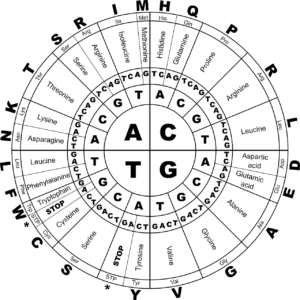
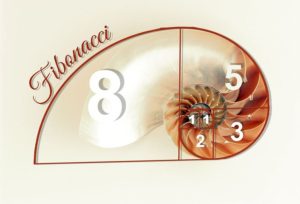
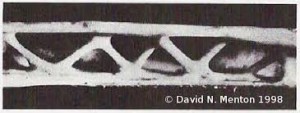
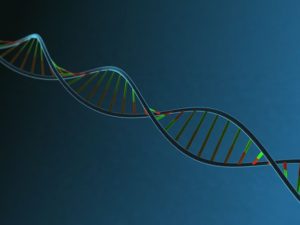
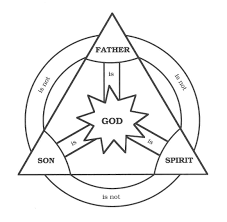


Sorry, comments are closed for this post.